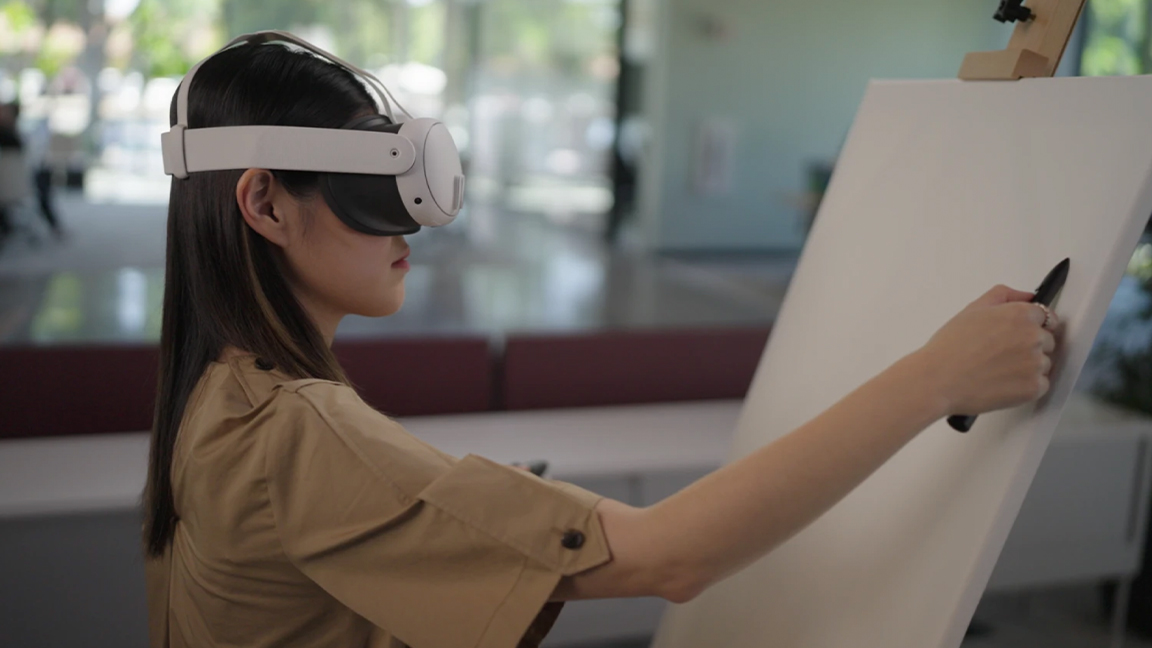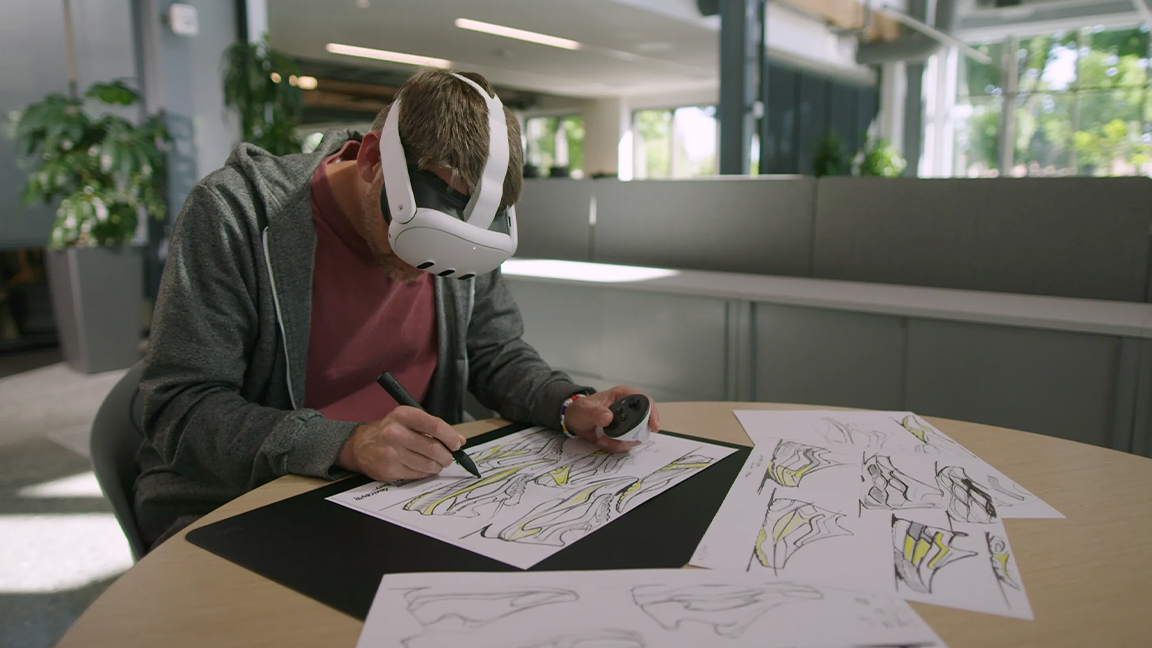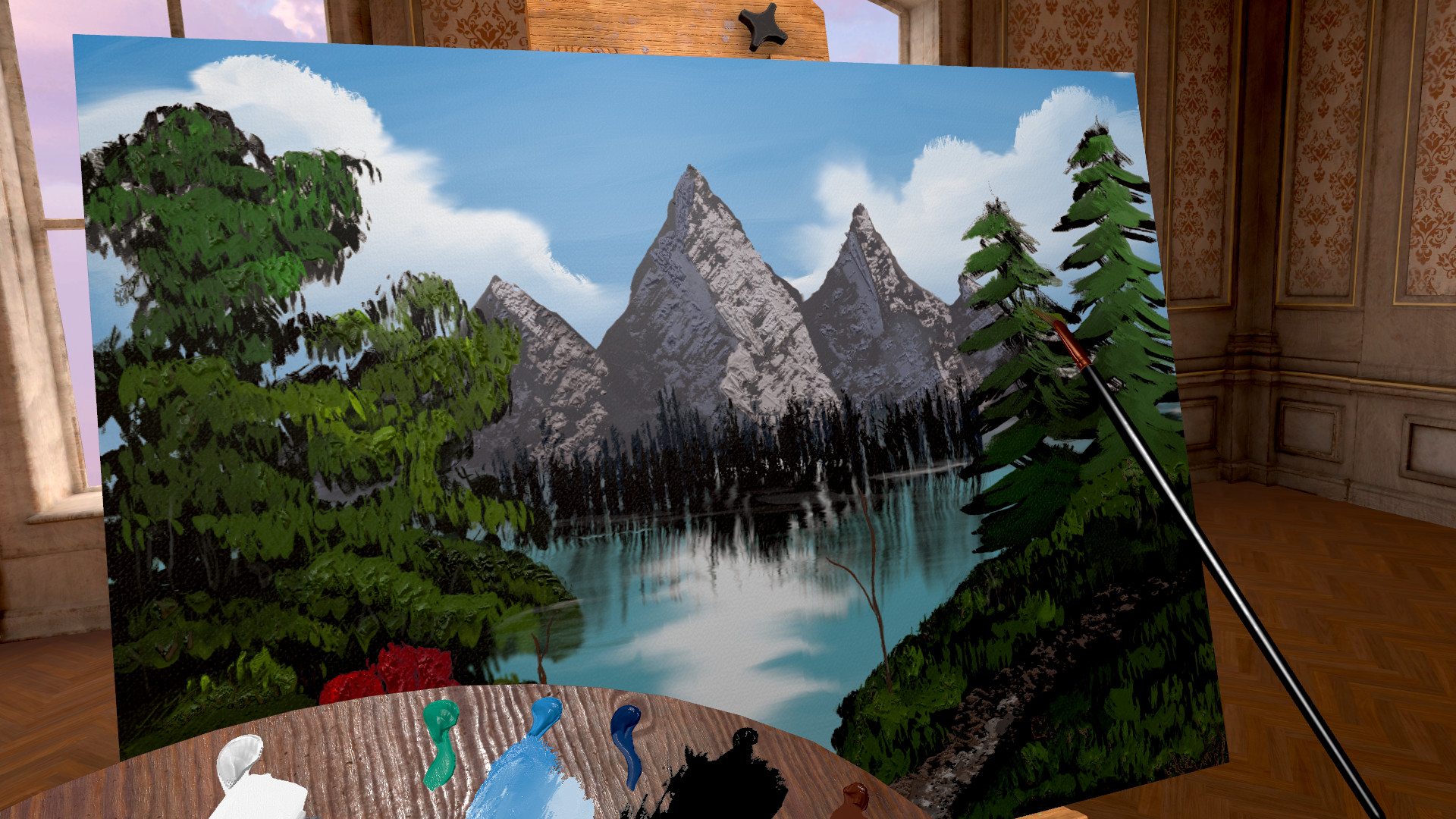
Most digital artists are familiar with using a stylus paired with one of the best drawing tablets to create a masterpiece, but now there's a new kind of tech in the form of VR stylus pens. But what are they? And who are they for? We're about to explain as we take a deep dive into VR stylus' and how they can be used to transform your workflow in both 2D and 3D spaces.
Working with 3D modelling software and apps can sometimes be tricky, and a great way to better visualise your projects is by viewing them through one of the best VR headsets. With that said, a lot of companies in the 3D art and design space are now attempting to blur the lines between working IRL as well as in virtual reality with new tools and applications to promote a full 360 experience. Both Wacom and Logitech have VR stylus coming soon.
For example, Shapelab recently updated its software to include support for both desktop and VR modes (previously VR-only) to provide artists and game developers the choice to switch between working via a headset, or opting for a more traditional desk setup with a keyboard and mouse.
The new VR stylus in development could be the key to helping digital artists, product designers, and illustrators perceive their projects in a whole other dimension than what they might be used to – with a stylus that can function in a 3D space using AR or VR, and work with you in any format. Forget the best Apple pencil alternatives, we think VR styluses will be the next big thing for digital artists, and here's why.
VR stylus explained: how do they work?

Our very own Digital Arts and 3D editor, Ian Dean, was given a first-hand demo of how these VR stylus pens are expected to work. One example in particular he notes, demonstrated a VR stylus being used on a Wacom tablet at a desk. The person then puts on a VR headset while still drawing with a stylus, and can visualise the design in a 3D space. After removing the VR headset, the artist carries on as normal drawing at the desk with the same stylus.
You can still see what you're working on thanks to the video passthrough feature present in most VR headsets, offering a blend of VR with the ability to see the world around you. The idea of a VR stylus is that it can be used in the exact same way as a regular stylus for drawing and note-taking, but also has the benefit of functioning in VR and AR 3D spaces as well, as a tool for artists and designers who work using virtual reality to see their projects in a 360-degree angle.
Take a look at the video below from Wacom for a visual explainer of what a VR pen can look like.
VR stylus explained: why do I need one?
So, we've explained what a VR stylus is and how they work, but who are they really for? Primarily, a pressure-sensitive stylus controller will mainly benefit creative professionals, although, if you're someone who has never entertained the idea of drawing in a virtual reality space, then a VR stylus could be the perfect gateway to helping you merge into a new workflow future.
Wacom CEO, Nobutaka Ide explains who he sees could be using VR stylus, saying: “There are so many 3D, CG, virtual and environmental workflows out there, so we really like to deliver not just 2D but also a kind of virtual space-based working experience. The use case is huge, and our first step is to focus on our creative workflow - automobile design, architecture design - in parallel with the educational experience; how we can deliver a more flexible space for creative students.”
The use case is huge and our first step is to focus on our creative workflow
Nobutaka Ide, CEO, Wacom
For example, there are a number of ways to work that extend beyond the physical desk, such as cloud working, remote working, working exclusively in VR software etc. A VR stylus supports the seamless workflow between 2D and 3D workspaces for individuals who utilise more than one way of working.
Many creatives have also found that it can feel clunky to draw with a standard VR controller, lacking ergonomics and control for artistic creation. It's kind of like the equivalent of using a computer mouse for drawing (though admittedly some people quite like this method). Therefore, it has become necessary for companies to invest in a stylus that can replace a clunky VR controller for those who desire accuracy when drawing in virtual reality.
VR stylus explained: who makes them?
We've already introduced you to the Wacom VR Pen, released in 2020, but are there any other models on the market? Yes. There's also the Logitech MX Ink Stylus for Meta Quest (releasing in September). Before this, Logitech created the VR Ink Pilot Edition back in 2019, but it required special external trackers to work.
Unfortunately, there aren't yet a lot of other options on the market to choose from when shopping for a VR stylus, but that might soon change as demand increases. Interested in the Logitech MX Ink? Take a look at the video below to learn more.
VR stylus explained: what software is supported?

Here's the thing, VR stylus like those coming from Wacom and Logitech will work with traditional '2D' digital art apps on a drawing tablet at your desk, as well as viewed inside of a VR headset, so your favourite art software can be used, whether that's Photoshop, Rebelle or Clip Paint Studio.
The difference is you can also use art software designed to be used in a 3D space, and easily swap between '2D' art creation and VR 3D. Below are the best VR art apps on the market right now.
- Tilt Brush One of earliest spacial VR painting apps, but Google pulled support for it some time ago. You can still download it and it's become open source so new developers can support it or create their own apps off it. Works on everything headset, including PlayStation VR.
- Open Brush This is new, and one of the best VR painting apps to make use of Tilt Brush's open source code. It can be used in all VR and AR headsets, including Meta, Steam and iPhone.
- Vermillion While other VR art apps here replicate modelling and sculpting, this one perfectly mimics oil painting. You can mix paint and blend on an in-VR easel, change location, time of day and lighting, and just, well… paint.
- Gravity Sketch A pro-level VR drawing tool aimed at product designers, this app is one of the more commercially useful on my list. It's free to download for individuals but studios need to pay - but it's geared for collaboration with VR and desktop views.
- SculptrVR This is a fun modelling app that gamifies the process of art creation. You can sculpt characters and worlds using voxels and then play in them, and invite friends to come in and experience your creations.
- Multi Brush This is another Tilt Brush spin-off, but with one great idea - multiple people can collaborate in the same app, sculpts and paintings. It lacks the same deeper features as some on my list, but it's great fun.
VR stylus explained: price and availability
How much does a VR stylus cost? Honestly, we're not 100% sure yet. We know that the upcoming Logitech MX INK will retail for approximately $130 (or $169.99 with an Inkwell charging dock), which isn't bad at all if you ask us - at least compared with the price of a normal high-end stylus such as the Apple Pencil Pro - which retails for $129.
Previously, Logitech's Ink Pilot VR stylus had a retail price of a whopping $750! As the market for these VR pens is pretty niche at the moment, it's hard to compare prices for other models and brands. Wacom's top stylus, the Wacom Pro Pen 3 sells for $129.95 / £109.99 - so we'd expect that any VR Stylus released by Wacom would sit in the $200-$300 price range as a guesstimate.
If you're looking for a cheap alternative to a VR stylus, there's always Zapbox. We tried out this AR device that converts your iPhone into a virtual reality headset, and the Zapbox Gen 2 allows for creating your own 3D art. The all-in-one mixed reality kit comes included with a pair of AR 'wand' controllers that resemble PlayStation Move controllers if they were designed in Minecraft, all for $89.99. So it's not exactly the same as a VR stylus - you can't move from 2D to VR art creation - but it's a nice tester to see if this kind of creative workflow is for you.







